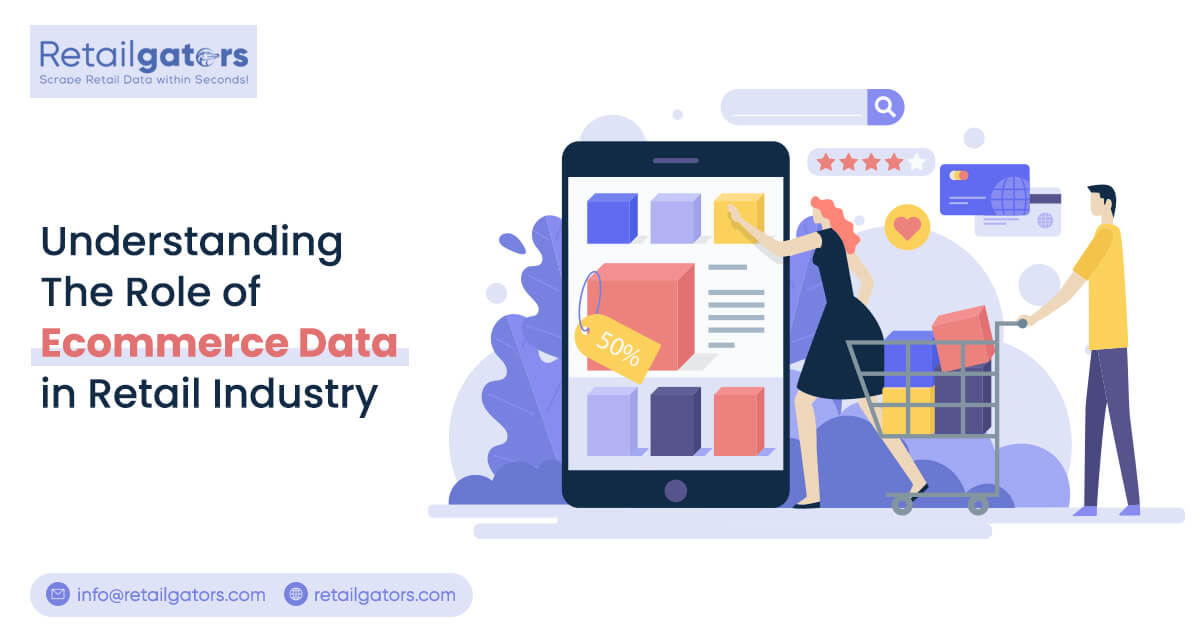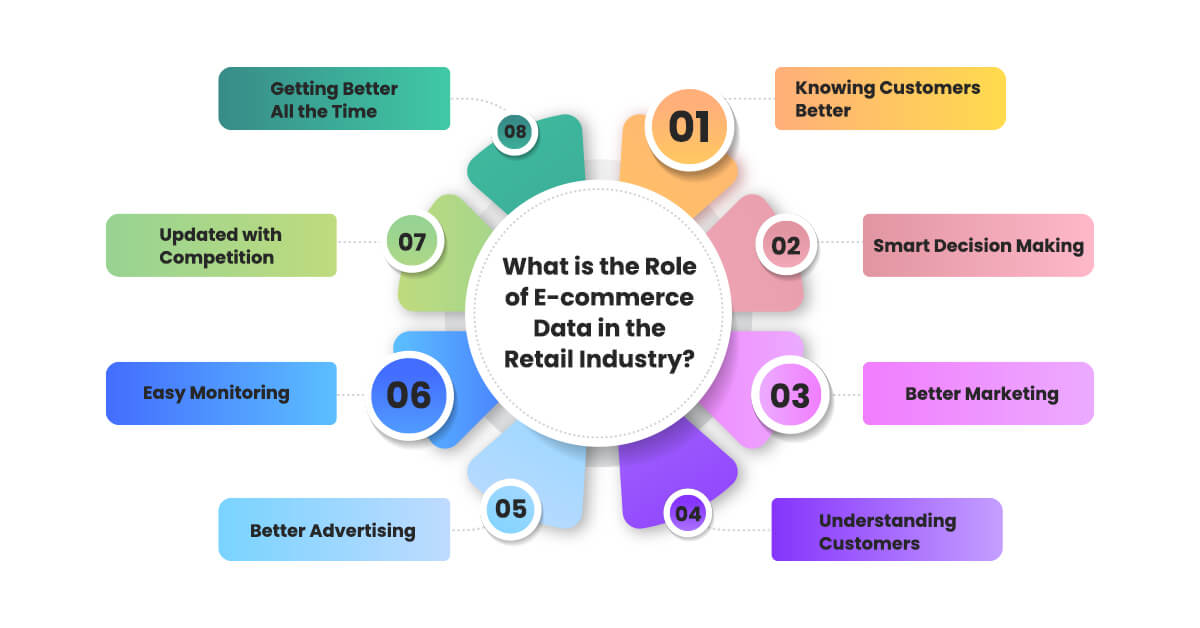Understanding The Role of Ecommerce Data in Retail Industry

In the modern era, where online shopping is the norm, merchants are realizing the value of using ecommerce data to get important insights on customer behavior, market trends, and operational efficiency. This article looks at why retailers need ecommerce data and how it can be utilized to boost business development and success.
What Is Ecommerce Data?
Ecommerce data refers to the massive volume of data created by online transactions, conversations, and engagements on ecommerce platforms. Ecommerce data is the large quantity of information produced by online purchase interactions and transactions. It comprises a diverse set of data collected from different e-commerce ecosystem sources, such as social media platforms, websites, mobile applications, online stores, and consumer interactions.
Ecommerce data has lots of functional parts that help online stores run smoothly. Here's understand more about it:
Transaction Details
Information on what clients purchase, such as the amount, what they paid, and how they paid.
Product Details
Information on the items being offered, such as descriptions, pricing, and remaining stock.
Website Visitors
Information on who visits the website, which pages they see, and how long they remain.
Marketing Results
Numbers that demonstrate how healthy advertisements and promotions are performing, such as how many people click on them and purchase something.
Customer Messages
Records of interactions with customers, such as emails or chats, that help you understand what they want and how happy they are.
Performance Measures
Statistics that show how well the online store is doing overall, such as how much money it earns and how pleased its customers are.
What Is The Role Of E-Commerce Data In The Retail Industry?

E-commerce data is critical in the retail business, acting as a powerful tool for driving growth, improving consumer experiences, and optimizing operations.
Knowing Customers Better
E-commerce data acts as a treasure map for merchants, displaying exactly what their customers desire and how they behave when shopping online. It gives businesses valuable data into product popularity, customer preferences, and browsing behaviors, allowing them to modify their goods and marketing efforts to improve the shopping experience.
Smart Decision Making
E-commerce data assists merchants in monitoring and analyzing changing user behavior. They can decide what products to sell, how much to charge for them, and when to offer discounts or promotions. By looking at trends in sales and customer behavior, retailers can make sure they're always offering what people want at the right price. This data-driven approach enables retailers to reduce risks while increasing earnings, providing them with a competitive advantage in the harsh world of online retail.
Better Marketing
By leveraging e-commerce data, merchants can create highly focused marketing efforts that resonate with specific customers. Customers can be easily segmented based on purchase history, browsing behavior, and demographic information, allowing merchants to give targeted specials and recommendations, strengthening customer connections and boosting sales.
Understanding Customers
E-commerce data helps retailers know their customers better. By looking at things like what people buy, when they buy it, and how much they spend, stores can figure out about tastes and preferences of their customers. This helps them offer products and services that people actually want.
Better Advertising
E-commerce data makes digital advertising and marketing easier and more effective. Stores can use data to figure out who their customers are and what they're interested in. This helps them create targeted ads and promotions that are more likely to catch people's attention and persuade them to buy.
Easy Monitoring
E-commerce data helps stores run smoothly behind the scenes. By keeping track of things like inventory levels and shipping times, retailers can make sure they always have enough products in stock and can deliver them to customers quickly and efficiently.
Updated with Competition
In the competitive world of online retail, staying ahead is critical. E-commerce data helps retailers keep an eye on what their competitors are doing and how the market is changing. By staying informed and adapting quickly, retailers can make sure they're always one step ahead of the competition.
Getting Better All the Time
E-commerce data helps retailers keep improving. By looking at things like sales numbers and customer feedback, stores can figure out what's working well and what needs to change. This helps them keep growing and getting better over time.
Where To Use Ecommerce Data?
E-commerce data may be utilized in a number of ways throughout the customer experience, from acquiring new consumers to keeping existing ones satisfied. Here are a few significant areas:
Before the purchase
Data helps you understand how users interact with your website, revealing areas that need to be improved for a more seamless browsing experience. It analyzes browsing and purchasing history to recommend related goods to specific clients, improving the likelihood of a purchase.
During the purchase
Personalization entails providing tailored promos and discounts depending on individual interests, making the buying experience more appealing. It helps to adjust price to reflect market changes, competitor analysis, and consumer demand, optimizing profits while remaining competitive.
Conclusion
In today's online market, e-commerce data is a secret weapon for retailers. It helps them understand their customers well. By looking at things like what people buy, how they shop online, and who they are, retailers can offer personalized shopping experiences. They can suggest products that match each customer's tastes and preferences, making shopping more enjoyable. By analyzing data trends and using intelligent tools, retailers can forecast what customers might want next.

Comments
Post a Comment